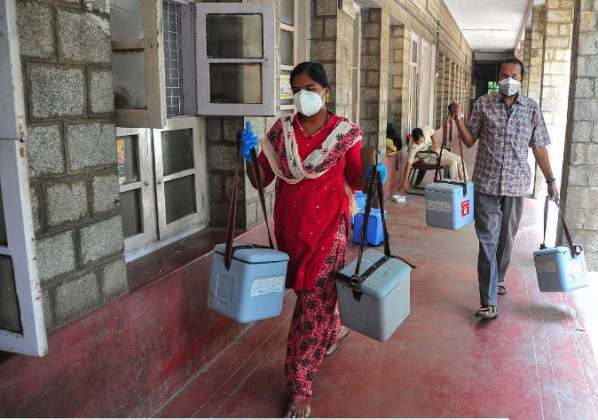On April 8, the Ministry of Health and Family Welfare announced that all eligible adults – i.e. people older than 18 years – will be able to receive booster doses for COVID-19 from April 10. The move is the latest expansion of the countrys COVID-19 vaccination drive, which commenced on January 16, 2021, and has since fully vaccinated 83 crore people as well as has delivered booster doses to 2.28 crore people.
Prime Minister Narendra Modi had announced on December 25, 2021, that the drive would be expanded from January 3, 2022, to include young adults (15-18 years) and from January 10 to avail booster doses to those older than 60 years and to frontline and healthcare workers. The announcement was unexpected, in part because questions on the need for booster doses in a country with very high seroprevalence (i.e. presence of antibodies owing to exposure to the virus) have never been settled.
Modi‘s words were also unexpected because just a week earlier, on December 17, Vinod K. Paul, the man in charge of India’s COVID-19 vaccination drive, had said the country would focus first on fully vaccinating all eligible adults before rolling out booster doses. That hadn‘t happened by December 25 – and hasn’t even until now. Additionally, 24 hours before the announcement, health ministry officials had said they hadn‘t had a chance to finish studying Covaxin’s response against the omicron variant.
Indeed, inconsistencies like this between independent experts, government officials and the prime minister himself dog the Union health ministry‘s decision yesterday to render India’s entire adult population to be eligible for booster doses.
The first, and perhaps foremost, such issue is that the decision to expand the booster dose programme is the second instance of a prime-ministerial announcement sidestepping the view of a government body he set up, to determine which vaccines should be included in the vaccination and booster drives.
A source at the National Technical Advisory Group on Immunisation (NTAGI) told The Wire Science that the body never discussed the need for booster doses in India, among various population groups, because the item was never listed in its internal agenda. So the question of whether it approved or rejected the idea is moot.
Thus far, all vaccine-manufacturers have had to have their vaccines approved by the Drug Controller General, by law, and subsequently by NTAGI, as a matter of the governments process during the pandemic, before it could become part of the vaccination drive – with one exception.
On March 14, the Union health ministry announced its approval for the use of Corbevax, a COVID-19 vaccine manufactured in India by Biological E, among young adults aged 12-14 years without NTAGIs clearance.
Jayaprakash Muliyil, a former professor of community medicine at the Christian Medical College, Vellore, and a member of NTAGI, also told The Wire Science at the time that the nodal decision-making group within NTAGI hadnt yet developed a final view on Corbevax because it lacked “post-omicron data”.
The Wire Science wrote at the time, “The Centre‘s decision to skip NTAGI’s approval for Corbevax deprives the vetting process of three levels of checks, including by subject experts.” The new decision to expand the availability of booster doses inherits the same problem – as well as another form of expertise neglect.
Who are the recipients?

Mulilyil has said before that booster doses are not required for entire populations – as have the WHO, the Indian Medical Association and virologist Gagandeep Kang. The last three have said booster doses can be rolled out to those older than 60 years, those whose jobs entail high exposure to the virus (frontline and healthcare workers) and to people with compromised immune systems.
On the other hand, Virologist Shahid Jameel has noted the omicron variants ability to reinfect people – i.e. after they have been naturally infected before – and has stressed on the need for booster doses in this context.
However, Jameel has also advocated for the use of an heterologous booster regimen, also known as ‘mix-and-match’ boosting. In this regime, a person who has been fully vaccinated with Covaxin will receive Covishield, and vice versa. On December 27, 2021, Economic Times had also quoted an unnamed government official saying the government might recommend a heterologous booster regimen based on a “soon to be released” study. It is yet to be released.
Indias policy is homologous, however: those who have received Covaxin will also be boosted by Covaxin, and similarly for Covishield.
(Fewer than 1% of recipients in India have received the Russia-made Sputnik V vaccine. Also, as of 9 am on April 9, 2022, the CoWIN dashboard didnt display the number of vaccines administered by name.)
Leave a Reply